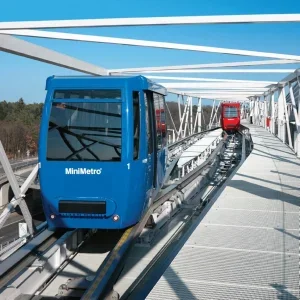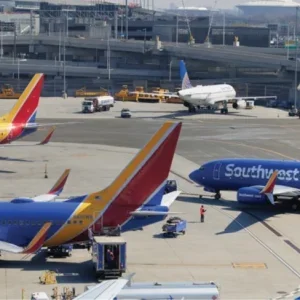Improved safety margins, reductions in fuel burn, emissions and noise, and enhanced collaboration between air navigation service providers (ANSPs), governments and airlines worldwide.
The benefits to all aviation stakeholders of integrating air traffic management (ATM) systems are well-documented and yet, despite some successes such as the NextGen programme in the US, issues of cost, politics and technology gaps between nascent and more mature aviation markets mean that progress towards genuine worldwide ATM interoperability remains frustratingly slow.
As divisional senior vice-president of flight operations at Emirates Airlines and a former chairman of the Operations Committee of International Air Transport Association (IATA), Alan Stealey is uniquely positioned to observe and influence ATM integration projects across the globe.
"What we need is a system worldwide that leverages the best use of modern on-board avionics, thus reducing the reliance on ground-based aids, radar and voice contact," he says. "Single European Sky ATM Research (SESAR), Japan’s Collaborative Actions for Renovation of Air Traffic Systems (CARATS), CANNAPE in Canada, and other initiatives in Russia and India −whatever happens in these individual schemes, the ultimate goal is that we can fly the same aircraft to the same procedures around the world."
Cultural revolution
Despite being beset by lengthy delays and a ballooning budget that could eventually hit $100 billion, NextGen is on course to replace the outdated US national airspace system (NAS) with one based on satellite-based tracking within the next decade. The Federal Aviation Administration (FAA) estimates that by 2018, NextGen will already have reduced aviation fuel consumption by 1.4 billion gallons, reduced emissions by 14 million tons and saved $23 billion in cumulative costs.
Stealey contrasts this with the progress of the SESAR programme in Europe, where certain ANSPs have proved less willing to embrace cultural and technological change.
"IATA has been keeping a very close eye on SESAR, and the political, labour and technical difficulties mean that it is moving disappointingly slowly," he says. "What concerns me is that a lot of what SESAR and NextGen are offering could be implemented quite quickly and simply, but it’s not being done. The Europeans have spent, I think, between €1.2 and €1.5 billion − and they’ve just been given another €600 million − and I can’t see anything out of it.
"In France, for example, there have been strikes by air traffic controllers due to safety concerns around the new system. Now, SESAR has some quite dramatic safety targets that it must achieve, and they are well documented, so this idea that one trade union is holding the rest of Europe to ransom is difficult for us to comprehend.
"Many ANSPs around the world still look upon themselves as quasi-government organisations that have a direct effect on the profitability of the airlines. No matter how they treat us or operate their airports in terms of efficiency, they still get their money and that’s a big issue. It needs a sea change in the culture to take place."
A key role: collaboration for an affective outcome
In addition to IATA, Stealey emphasises the pivotal role that the International Civil Aviation Organisation (IACO) has to play in fostering collaboration between different ATM stakeholders in the form of cost-effective aviation system block upgrades (ASBUs) and global upgrade projects such as the Seamless Asian Skies (SAS) programme in Asia-Pacific.
"Because we are working with government-owned or sponsored ANSPs, the initiative comes from the ICAO," he states. "Its overarching view of regulations across the airline industry and the fact that it’s part of the UN means that it moves relatively slowly, but I believe it’s the only way we can get some kind of standardisation around the world.
"In terms of interoperability, one of the problems we have is that regions tend to go off and do their own thing, so we end up with different equipment, training requirements and specifications; we want a standard system around the world and that is why it has to be done through the ICAO.
"Unfortunately, the ICAO’s remit is limited − it can recommend, advise and apply pressure, but it can’t tell people what to do. The ICAO and IATA talk about operability and how technical solutions in the US must link to technical solutions in Europe, and from my own point of view, as head of flight operations in Emirates, we’re keen that the state-of-the-art avionics we have on our aircraft function around the world.
"The IATA operation committee has been pushing quite hard to try to understand how this is going to be rolled out, because the implementation is really slow, but also to make sure that the operators who put equipment on their aircraft get good value and that the most capable aircraft are the best-served within the ATC environment. That is proving to be difficult to say the least," he adds.
United airlines
Despite the size of the task that lies ahead, Stealey points to several examples of where Emirates has leveraged its position as the biggest carrier in the Middle East to positively facilitate the harmonisation of disparate ATM systems and help introduce technology such as automatic dependent surveillance broadcast (ADS-B), which will eventually afford pilots and ATC personnel the same real-time view of air traffic.
"In Australia, they are gradually upgrading to ADS-B and Emirates is one of the airlines trialling the system with Air Services Australia," he explains. "For countries like India and Africa, and parts of Russia and the Far East as well, which will mean you no longer need to install and maintain expensive radar heads, you can use equipment on-board the aircraft.
"In the Gulf, we’ve been working with regulators and ANSPs in Oman and India to try and free up airspace and improve the flow of air traffic out of the United Arab Emirates (UAE). In Russia, we worked really well with the authorities to develop a whole new range of efficient routes, while in India the authorities have been very supportive in helping us to fly efficient routes across the Arabian Sea, Southern Indian Ocean and the Bay of Bengal in and out of to Australian airspace.
"We have also worked well with the Central African and South American authorities in developing and implementing a whole new route structure over Central Africa, the South Atlantic and into Brazil, where we’ve also enjoyed great cooperation from the Brazilian authorities," he adds.
Emirates willingness to share its expertise isn’t entirely altruistic, of course. By forwarding the case for global interoperability, the Dubai-based operator is able to contextualise the debate around ATM integration and avionics technology, as well as maximise the efficiency of its operations worldwide.
"As operators, we require a long lead-in time to put equipment in aircraft, so there has to be a good business case," explains Stealey. "We have to ensure that if we do spend money on avionics, it will be integrated so that we can use it worldwide, and that we get benefit; otherwise, why would we do it?
"At Emirates, we have a young fleet with the full suite of leading-edge avionics and we think there’s plenty incorporated into our aircraft already to cope with moving forward into the next generation of ATC technology. However, having collaborated with local ANSPs and regulators, it’s then available for any operator, so that’s pro bono work that we are doing because we believe it will benefit the whole industry."
Best foot forward: advances in ATM technology
Underpinning all of this is next-generation technology designed to reduce the burden on ground staff and replace outdated radar systems with on-board avionics systems that integrate new and existing technologies, including satellite navigation and surveillance, as Stealey explains.
"There are so many advantages now in terms of computer optimisation on board the aircraft," he says. "I think there will be a gradual amalgamation of airspace and ATC operations − that is how to make best use of technology such as 4D trajectory.
"Take the Seychelles, which is quite a challenging airport in terms of terrain; previously, pilots used a visual-based approach profile and if there was a low cloud base you couldn’t do it.
We’ve now, collaboratively with the Seychelles authorities, designed a curved approach,which allows us to fly a vertical and horizontal profile so that the final approach path lines up with the runway. It’s safer, more efficient and you have fewer diversions by using the flight management computer on board the aircraft.
Dubai is another example. It’s a constrained airport, so we’re developing simultaneous parallel approaches using on-board avionics. One aircraft will fly a straight approach with an instrument landing system (ILS) and the other aircraft will approach the airfield on an offset, so we can get much more traffic in an out.
"That’s what we’re really talking about when we talk about improved air traffic management − letting the aircraft fly the approaches as they’re designed and then we get the improvements."
As for the immediate future, Stealey believes that, contrary to opinion in some quarters, the move towards global ATM integration and interoperability will progress slowly, but that the tangible benefits of this aviation revolution are already being felt around the world.
"The impression is that there is going to be a step change in ATM, but I don’t think it’s going to happen like that, even with SESAR and NextGen, which are the two schemes that are the furthest forward," he says.
"At Emirates, we’re trying to show that if you leave us to do it with our aircraft, avionics and with our trained crews that have been approved by our regulators, we can fly a better, safer more efficient flight path than if we have to be controlled from the ground, so what we are seeing is a change from air traffic control to air traffic enablement."






